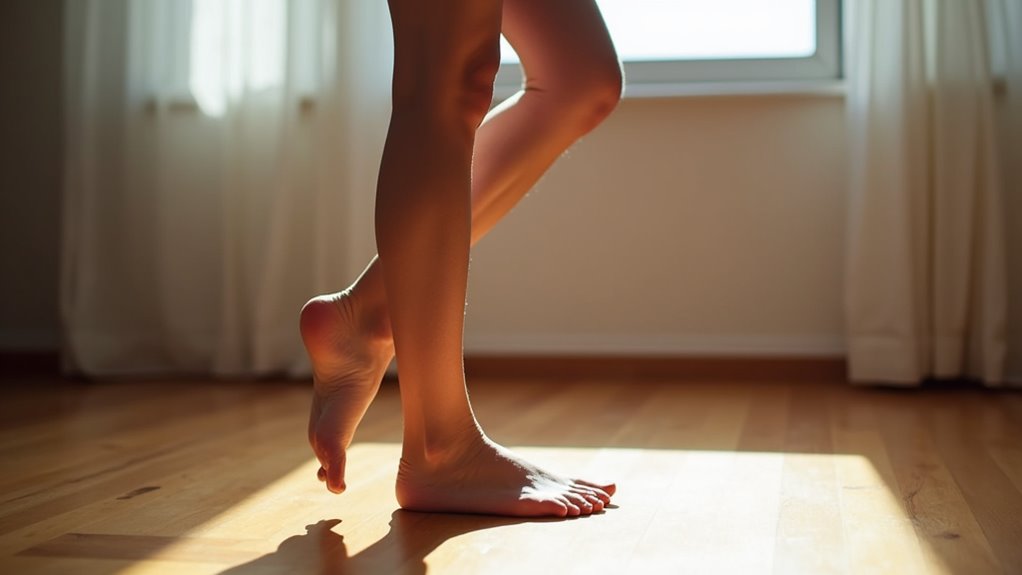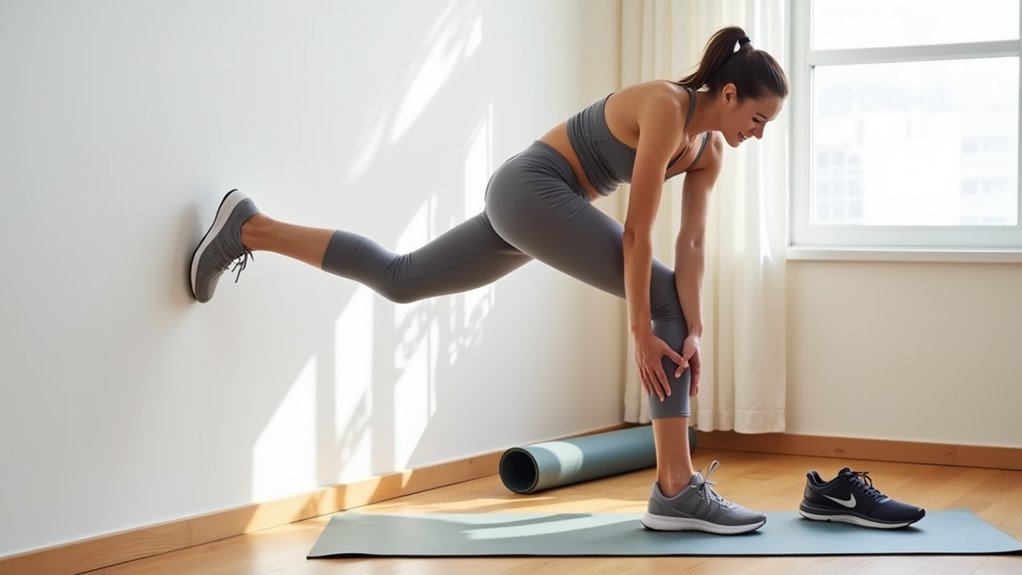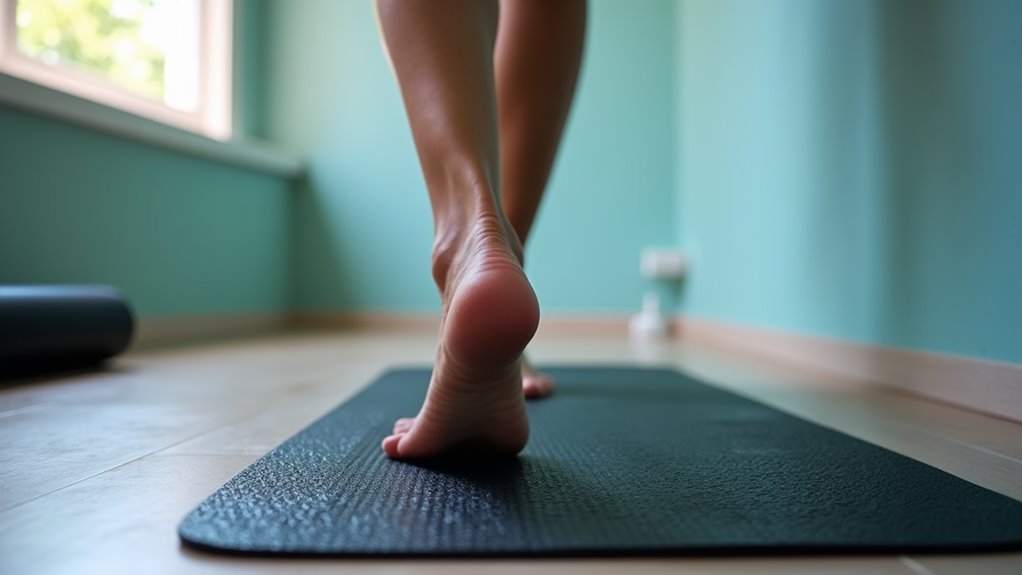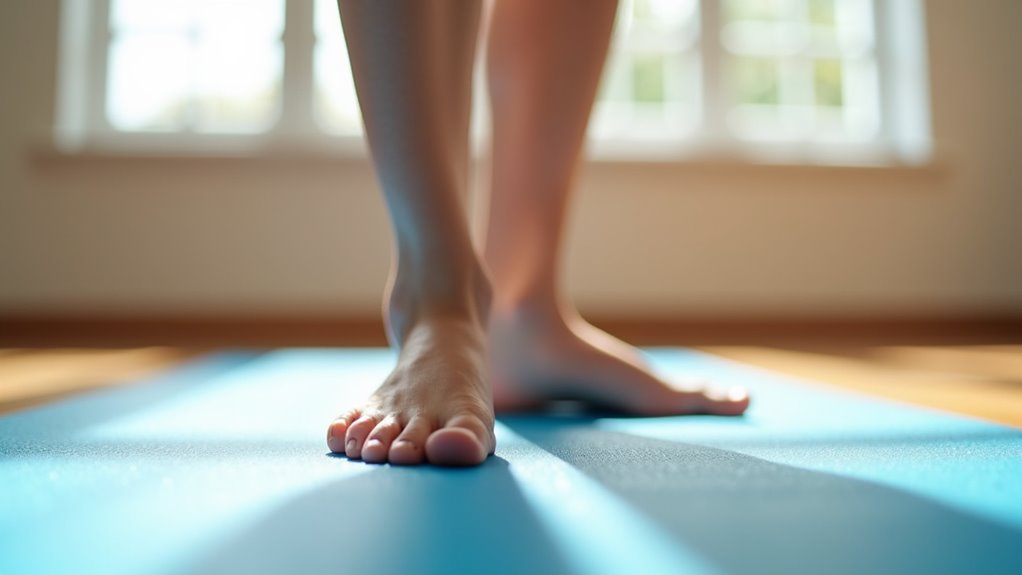There may be products. Products are independently selected by our editors. We may earn an affiliate commission from the links with no charge to you, example: as Amazon Affiliate.
If you’ve ever experienced a shooting pain from your lower back down to your heels, you’re not alone. This interconnected discomfort affects millions, yet many don’t realize that their back pain might actually start with their feet. Your body’s alignment works like a chain reaction – when your heels aren’t properly supported, it can throw your entire posture off balance, leading to persistent aches and decreased mobility. Understanding this connection between your feet and spine isn’t just about finding temporary relief; it’s about discovering the root causes that could be affecting your overall quality of life.
Key Takeaways
- Heel and spine health are directly connected, with conditions like herniated discs often causing radiating pain to the heels.
- Poor footwear choices and flat feet can disrupt body alignment, leading to both heel discomfort and back pain.
- Maintaining proper posture and strengthening core muscles helps stabilize the spine and prevent heel-related back issues.
- Regular stretching, supportive footwear, and ergonomic workspace setups significantly reduce the risk of developing heel-back pain connections.
- Custom orthotics and proper body mechanics during daily activities help manage and prevent recurring heel-related back problems.
The Root Causes

When your back starts hurting due to heel-related issues, several underlying factors might be at play. Your spine’s health directly connects to your feet through a complex chain of biomechanical relationships.
Conditions like herniated discs or spinal stenosis can trigger pain that radiates from your lower back down to your heels.
Your walking pattern changes significantly when you’re dealing with heel problems like Achilles tendonitis or stress fractures. You’ll often compensate by shifting your weight unnaturally, which strains your back muscles and spine.
Poor footwear choices or flat feet can amplify these issues, forcing your body to adjust its natural alignment.
If you’re experiencing persistent heel and back pain, it’s crucial to identify whether anatomical, biomechanical, or systemic factors are causing your discomfort.
Using comfort technology inserts can help maintain proper foot alignment and reduce strain on your back.
Common Signs and Symptoms
Three distinct signs typically indicate heel pain stemming from back issues.
First, you’ll notice pain that radiates from your lower back down through your leg to your heel, often accompanied by tingling or burning sensations.
Second, your pain will worsen when you perform activities that compress your nerves, such as sitting for long periods, bending, or lifting heavy objects.
Third, you’ll experience weakness in your foot or ankle that can make it difficult to walk or stand on your toes.
Unlike plantar fasciitis, you won’t feel the characteristic morning stiffness, and your pain won’t improve with movement.
Instead, you might experience numbness along specific nerve paths and consistent discomfort that intensifies with nerve-pressing activities.
Preventative Steps That Work

While recognizing heel-related back pain symptoms is important, taking steps to prevent these issues can spare you from future discomfort.
Start by maintaining proper posture with your feet flat on the floor and shoulders tucked back. You’ll want to strengthen your core through daily exercises like planks, which help stabilize your spine and reduce injury risk.
When you’re moving about, use proper lifting techniques by bending at your knees and keeping a wide stance. Don’t carry more than 10% of your body weight in bags or purses.
Wear comfortable, low-heeled shoes to reduce strain on your back. Consider using rolling carts for heavy items, and take regular breaks to walk and stretch throughout the day.
Remember to keep your computer screen at eye level to maintain good posture while working.
For those who must wear heels, choosing comfort-focused heels can significantly reduce stress on your back and improve overall posture.
Treatment Options for Relief
Since heel-related back pain can stem from various causes, treatment options range from simple home remedies to advanced medical interventions.
You’ll want to start with conservative treatments like rest, ice, and stretching exercises to reduce inflammation and improve flexibility.
If these don’t provide relief, consider custom orthotics or supportive footwear to correct your posture and reduce pressure on your heels.
For persistent pain, you might need physical therapy or corticosteroid injections.
Your doctor may recommend decompression therapy or epidural injections if your heel pain is related to spinal issues.
In severe cases, treatments like Extracorporeal Shock Wave Therapy (ESWT) or Platelet-Rich Plasma (PRP) therapy can stimulate healing.
Surgery remains an option when conservative treatments fail to provide relief.
Many patients find significant improvement by using posture support heels designed specifically to align the spine and reduce back strain.
Recovery and Long Term Management

Recovering from heel-related back pain requires a comprehensive long-term management strategy that extends beyond initial treatment.
You’ll need to make significant lifestyle adjustments, including adopting proper footwear and incorporating regular exercise into your routine. Focus on strengthening your core and back muscles through targeted physical therapy exercises.
Your recovery should also emphasize ergonomic improvements at work and home. Set up your workspace with proper ergonomic furniture, maintain good posture, and take regular breaks to stretch.
Don’t forget to prioritize quality sleep and consider holistic approaches like acupuncture or massage therapy. Using custom orthotics and arch supports can help alleviate heel pressure, while practicing proper body mechanics during daily activities will prevent strain on your back. Finding a pair of comfort heels specifically designed for support can significantly reduce pressure points that contribute to back pain.
Conclusion
You’re not alone in your battle against heel-related back pain – it’s like a domino effect where one misaligned piece affects the entire chain. By implementing proper footwear, maintaining good posture, and strengthening your core muscles, you’ll create a solid foundation for your body’s wellbeing. Remember, you don’t have to let discomfort dictate your daily life when you’ve got the right tools and knowledge at your disposal.

